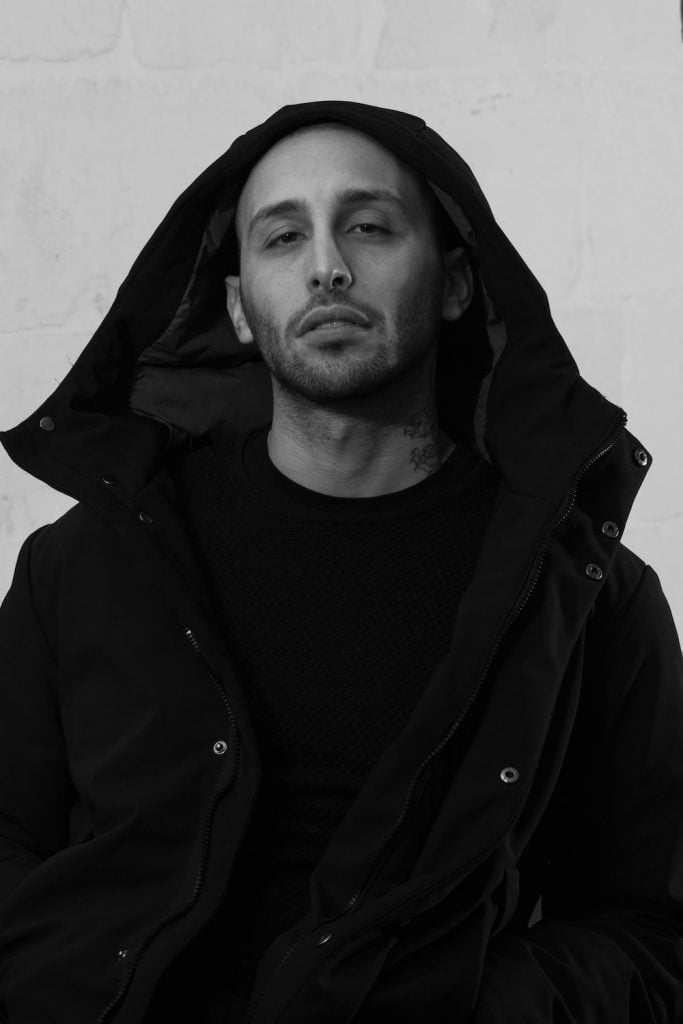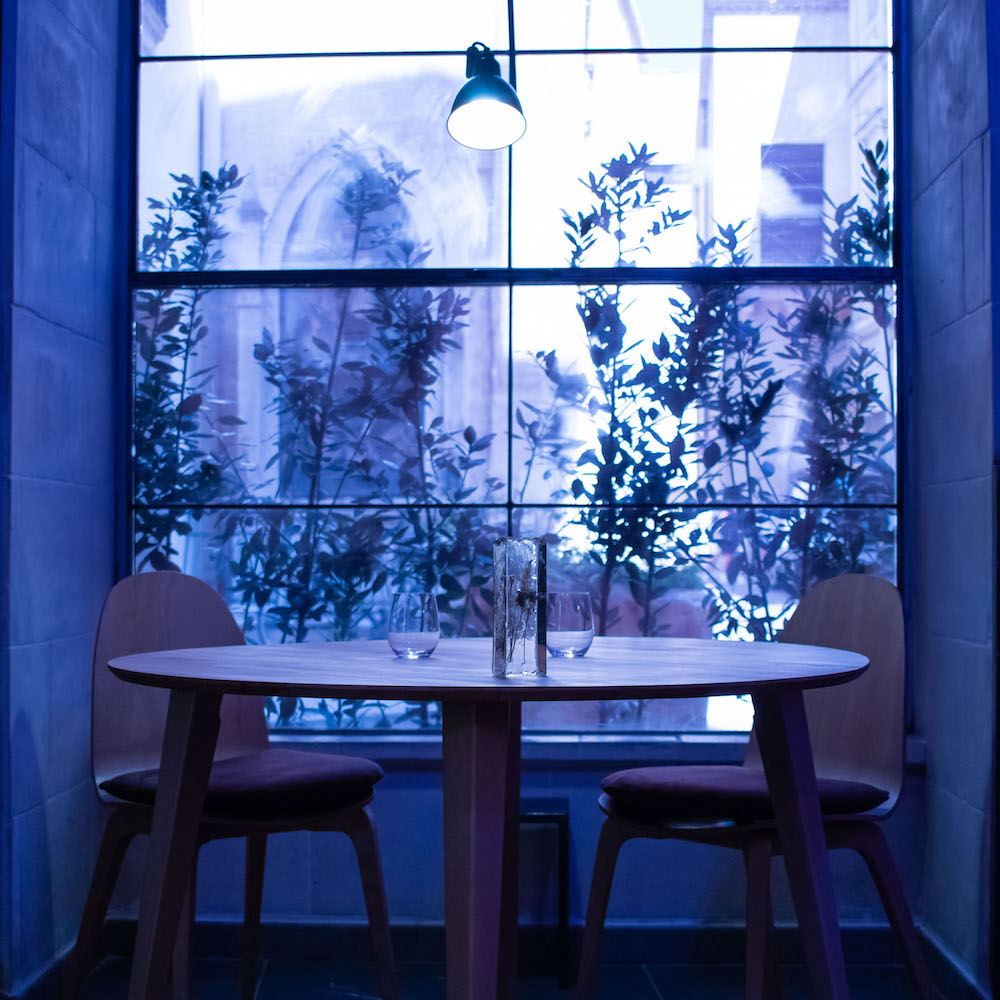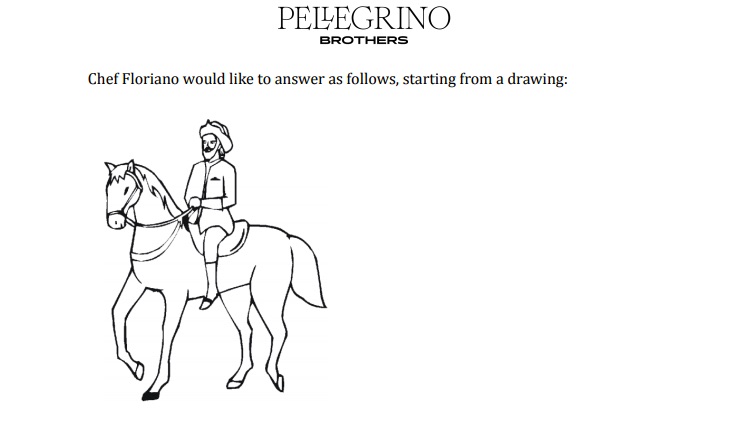Pop Culture
Chef Floriano Pellegrino Explains Why an Art Lesson Was the Best Way to Respond to That Viral Negative Restaurant Review
Here's why contemporary art may be the best way to understanding his thinking

Here's why contemporary art may be the best way to understanding his thinking

Eileen Kinsella

Call it the negative restaurant review heard ’round the world.
Yes, we’re talking about that one, in which writer Geraldine DeRuiter posted a scathing review on her website Everywhereist.com about Bros’, a restaurant in Lecce, in Southern Italy, that has the honour of being the only restaurant in the country with a Michelin star. DeRuiter described a recent pricey multi-course meal (as much as €200 per person) at what she called “the worst Michelin Starred Restaurant, Ever.”
She described “meat molecules,” (or “meat droplets,”) “frozen air,” “rancid ricotta,” numerous foams and now, most famously (or infamously) a citrus foam that was served in a plaster cast of the chef’s mouth, absent utensils.

Bros’ restaurant in Lecce, Italy. Image courtesy Bros’.
So how did Bros’ chef Floriano Pellegrino choose to respond? With a comparison to abstract art of course.
His written response, shared with Artnet News and other curious media, featured three artworks: a basic drawing of a man on a horse; Jacques Louis David’s dramatic depiction of Napoleon Bonaparte on a horse; and finally a colorful but somewhat crude-looking abstract painting that vaguely suggests a figure on a horse or beast. The drawings were interspersed with commentary by Chef Pellegrino.

“Being able to draw a man on a horse does not make you an artist. The result of your talent can be beautiful to look at, but it is not art. Drawing a man on a horse is the same as making food. Many people are able to make good food. Your grandmother could do it. My wife does it great. McDonald’s knows perfectly how to make a hamburger that almost everybody likes, and the pizzeria around the corner does their job perfectly. Preparing food that is liked is like a making a drawing of a man on a horse. It is not that hard, but most people will admire you.”
Pellegrino went on to say that he is “bored” with the type of “impressive but… shallow” paintings that fill the Louvre, the Prado and the Hermitage.
“Contemporary artists are looking for new horizons all the time, instead. They discover the unknown. They doubt everything including themselves, they research every boundary, they even challenge the concept ‘art’ itself. What is art? What is food? What is a chef? What is a client? What is good taste? What looks beautiful? What is a man on a horse?”
Since the art world is no stranger to contemporary art being ridiculed, Artnet News was intrigued by Pellegrino’s response and we reached out to him to ask a few more questions about the parallels between cutting edge contemporary art and the type of haute cuisine he and his chefs are embracing.
Proving true the old adage that there is no such thing as bad publicity—even where fine dining is concerned—it appears business is booming at Bros’. And that plaster cast of the chef’s mouth (called Limoniamo) that the citrus foam showed up in? It’s completely sold out, at a price of €58 each. At least 70 have been sold so far, and the restaurant is re-stocking.
(These responses have been edited for length and clarity.)
Did you study art history?
I am not an art expert at all. I’m a chef, I express myself not with paint but with food. But I dare to say I am pretty good at being creative. I know very well what I’m trying to express with my dishes, my menu, the dining experience I offer. Just like artists do. The drawing of a horse and the painting of Napoleon Bonaparte, I found online. The contemporary art piece, by Misheck Masamvu, I had seen hanging at the home of a friend of mine.
Why did you think art was the best analogy to use in your response to the review?
When I read that blogpost, I immediately sensed similarities between my kitchen and a painter’s studio. So many artists that are now part of the establishment have been made fun of when they were young. In that respect, a restaurant is like a museum. You’ll always have that group of brats who come in, don’t understand a thing about what they experience, and out of sheer ignorance make fun of a painting made by, let’s say, Jackson Pollock. ‘Haha! Dripping some paint on a canvas! That’s not art! I can do that! What an idiot!’ And always you’ll have that one ignorant person pointing to a chair or a fire extinguisher, shouting ‘Now that is well made! That’s art!’
EVERYONE, THE CHEF FROM BROS REPLIED TO MY REVIEW AND IT IS JUST AS RIDICULOUS AS YOU WOULD HAVE HOPED AND I AM SCREAMING WITH JOY.https://t.co/XHzrUhS7Gz
— Geraldine (@everywhereist) December 10, 2021
Do you collect art?
No, not yet. Isabella [Potì, his wife, who is also a chef and co-owner of Bros’] and I are both from humble origins and we didn’t have the chance.
What kind of responses have you had to your art-centric riposte?
It has all been very black and white. The reactions have been either hate or love.
Has anyone from the art world weighed in?
Not publicly. However, we have received quite a few private messages from artists, followers and friends who keep supporting us.… The blogpost was aimed at the crowds who cheer on a wrestling match, not at people who want to think about what modern cuisine stands for.
What was the most unusual result of the review/publicity?
Maybe the most surprising was that our Limoniamo, the thing that was made fun of the most, has never been as successful as now. Although, no, I take that back. We knew we had created a cool product.
What are your favorite museums to visit?
Like everybody, I’ve been to the British Museum and the Louvre, as those offer you a very broad historical view. I also visited the Metropolitan Museum for contemporary art. But most artistic input, I find in my every day life, through artists who I may call my friends, through international clients who show me things, to things I pick up from keeping my creative antenna up all the time.